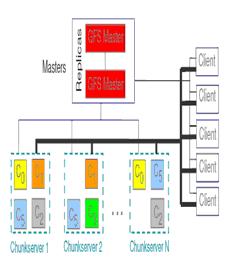Technical Paper Title: Cloud Computing
Authors: N.JYOTHIRMAI & B.MANJUSHA, 3rd BTech, IT
College: Prakasam Engineering College, Kandukur
Abstract:
For the past decade, application developers have been forced into an increasingly complex labyrinth of multi-tiered hardware, complex OO frameworks and middleware and associated tools. Each year, developers have faced new frameworks and a sea of new APIs. Instead of making the life of application developers easier and reducing the cost of application development, these technologies have done just the opposite. We are only now beginning to understand the expense of the middleware legacy.
The good news is that application developers are on the verge of being liberated from the tyranny of middleware. Next Generation IT will leverage a new computing platform which makes the development and delivery of applications significantly easier than it is today. This new platform consists of Cloud Computing, Software As A Service and Dynamic Languages. Cloud Computing offers mainframe or better infrastructure through a small set of services delivered globally over the Internet. Software as a Service is a new delivery model which provides flexibility to both the provider and the customers. Dynamic languages and modern frameworks lower the barrier for application development and enable the rapid development of applications.
“IBM thinks the importance of cloud computing is that it will help address the fundamental problems of running a data center and being able to scale the resources of that data center in order to run the next generation of Internet applications,”
This paper describes cloud computing, a computing platform for the next generation of the Internet. The paper defines clouds, explains the business benefits of cloud computing, and outlines cloud architecture and its major components.
Cloud computing infrastructure accelerates and fosters the adoption of innovations. Cloud computing infrastructure allows enterprises to achieve more efficient use of their IT hardware and software investments Enterprises strive to reduce computing costs. Many start by consolidating their IT operations and later introducing virtualization technologies.
Why cloud computing?
Cloud Architectures address key difficulties surrounding large-scale data processing.
In traditional data processing problems faced are:
1. Cost
2. Scalability
3. Flexibility
4. Availability
5. Portability
6. Collaboration
7. Enable new stuff that we couldn’t do before!
Clouds – the next evolution of hosting
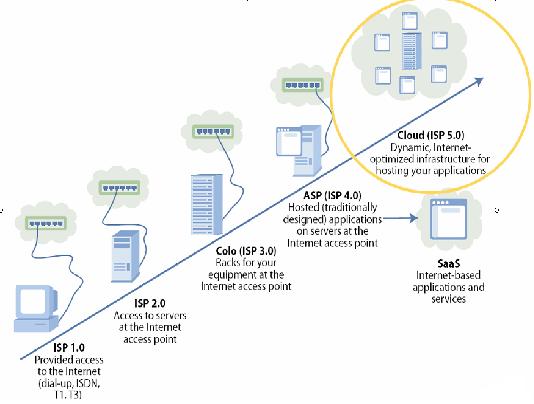
Cloud Architectures solve such difficulties. Applications built on Cloud Architectures run in-the-cloud where the physical location of the infrastructure is determined by the provider. They take advantage of simple APIs of Internet-accessible services that scale on demand, that are industrial-strength, where the complex
reliability and scalability logic of the underlying services remains implemented and hidden inside-the-cloud. The usage of resources in Cloud Architectures is as needed, sometimes ephemeral or seasonal, thereby providing the highest utilization and optimum bang for the buck.
What is Cloud?
• The Cloud: The Universe of all Web Services
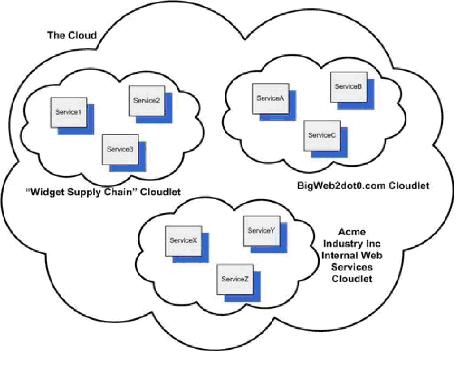
Definition
A cloud is a pool of virtualized computer resources.
A cloud can:
• Host a variety of different workloads, including batch-style back-end jobs and interactive, user-facing applications
• Allow workloads to be deployed and scaled-out quickly through the rapid provisioning of virtual machines or physical machines
• Support redundant, self-recovering, highly scalable programming models that allow workloads to recover from many unavoidable hardware/software failures
• Monitor resource use in real time to enable rebalancing of allocations when needed
A cloud is more than a collection of computer resources because a
Cloud provides a mechanism to manage those resources. Management includes provisioning, change requests, reimaging, workload rebalancing, deprovisioning, and monitoring
what is Cloud computing?
Cloud computing is using the internet to access someone else’s software running on someone else’s hardware in someone else’s data center.
It is a style of computing in which IT-related capabilities are provided “as a service”, allowing users to access technology-enabled services from the Internet (“in the cloud”) without knowledge of, expertise with, or control over the technology infrastructure that supports them.
An emerging computing paradigm where data and services reside in massively scalable data centers and can be ubiquitously accessed from any connected devices over the internet.
Cloud computing environments support grid computing by quickly providing physical and virtual servers on which the grid applications can run.
Clouds also support nongrid environments, such as a three-tier Web architecture running standard or Web 2.0 applications
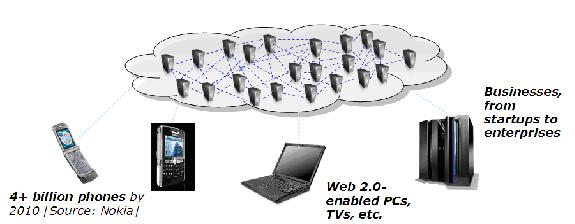
Key characteristics of cloud computing
• Customer capital expenditure is minimized and thus lowers barriers to entry, as infrastructure is owned by the provider and does not need to be purchased for one-time or infrequent intensive computing tasks.
• Device and location independence enables users to access systems regardless of their location or what device they are using, e.g., PC, mobile.
• Multi-tenancy enables sharing of resources, and costs, among a large pool of users, allowing for:
o Centralization of infrastructure in areas with lowers costs, e.g., real estate, electricity, etc.
o Peak-load capacity increases (users need not engineer for highest possible load levels)
o Utilization and efficiency improvements for systems that are often only 10-20% utilized
• On-demand allocation and de-allocation of CPU, storage and network bandwidth
• Performance is monitored and consistent, but can be affected by insufficient bandwidth or high network load.
• Reliability is enhanced by way of multiple redundant sites, which makes it suitable for business continuity and disaster recovery.
Architecture of cloud computing
Cloud architecture is the systems architecture of the software systems involved in the delivery of cloud computing, e.g., hardware, software, as designed by a cloud architect who typically works for a cloud integrator. It typically involves multiple cloud components communicating with each other over application programming interfaces, usually web services.
This is very similar to the Unix philosophy of having multiple programs doing one thing well and working together over universal interfaces. Complexity is controlled and the resulting systems are more manageable than their monolithic counterparts.
Cloud architecture extends to the client, where web browsers and/or software applications are used to access cloud applications.
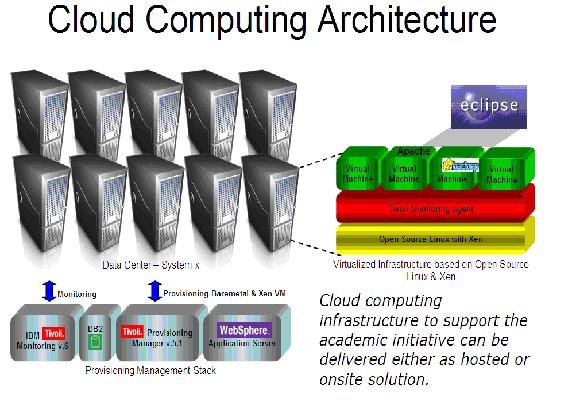
Tivoli
Provisioning Manager –
• automates imaging, deployment, installation, and configuration of the Microsoft Windows and Linux operating systems, along with the installation configuration of any software stack that the user requests.
• Tivoli Provisioning Manager uses Web sphere Application Server to communicate the provisioning status and availability of resources in the data center, to schedule the provisioning and deprovisioning of resources, and to reserve resources for future use.
IBM Tivoli Monitoring Server
• -monitors the health (CPU, disk, and memory) of the servers provisioned by Tivoli Provisioning Manager.
DB2
• is the database server that Tivoli Provisioning Manager uses to store the resource data.
IBM Tivoli Monitoring agents-
• that are installed on the virtual and physical machines communicate with the Tivoli Monitoring server to get the health of the virtual machines and provide the same to the user. All requests are handled by Web2.0 components deployed on the Web Sphere Application Server. Requests are forwarded to Tivoli Provisioning Manager for provisioning deprovisioning servers
Cloud offering variations:
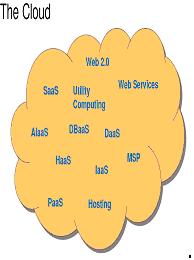
a) SOFTWARE AS A SERVICE (SAAS) – ALWAYS UP TO DATE
• The great benefit of SAAS is the ability, though hopefully not the requirement, to run the most recent version of the application. The pain of installation and upgrading is replaced by a simple request to run a specific version of the software. It eliminates themed to install hardware or software on the client premises.
• SAAS enables the service provider to support many clients using a common infrastructure. It may even allow all clients to run a single or small number of instances of the application. Providers have the ability to collect detailed information about defects, performance and usage patterns to improve their product. Finally, SAAS allows updates, beta and new release features to be delivered to clients on a per user, team or company basis.
• Google has clearly demonstrated the benefits of the software as a service model.
Amazon Web Services and recently Google App Engine enable others to
deliver their own applications leveraging their massive infrastructures
b) Utility computing
• The idea is not new, but this form of cloud computing is getting new life from Amazon.com, Sun, IBM, and others who now offer storage and virtual servers that IT can access on demand.
• Early enterprise adopters mainly use utility computing for supplemental, non-mission-critical needs, but one day, they may replace parts of the datacenter. Other providers offer solutions that help IT create virtual datacenters from commodity servers, such as 3Tera’s AppLogic and Cohesive Flexible Technologies’ Elastic Server on Demand.
• Application as a service
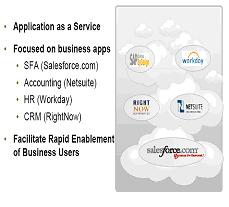
• Platform as a Service
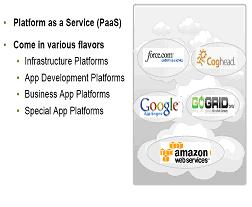
Cloud provisioning and management
Automated provisioning
• The core functionality of a cloud is its ability to automatically provision servers for innovators and to enable innovators, administrators, and others to use that function with a Web-based interface.
The value of having a fully automated provisioning process that is security compliant and automatically customized to innovators’ needs is manifested in reduced time to introduce technologies and innovations, cost savings in labor for designing, procuring.
Reservation and scheduling
• allow cloud administrators to accurately schedule resources for future dates Change management
Extending contracts / Changing contracts
• The cloud allows innovators to request extensions to their original contract end date.
• Change contract is automated and carries all the advantages of cloud provisioning: it requires no manual administrative support, is carried out in an hour or less, can be requested at anytime, and has its interface through the cloud portal
Monitoring
• The cloud includes capabilities for monitoring both individual servers and collections of servers. Monitoring is performed using IBM® Tivoli® Monitoring. This involves installing an IBM Tivoli Monitoring agent on each cloud server and configuring the IBM Tivoli Monitoring server.
Open source
• Open source solutions played an important role in the development of the cloud. In particular, a couple of projects have been foundations for common cloud services such as virtualization and parallel processing.
• Xen is an open-source virtual machine implementation that allows physical machines to host multiple copies of operating systems. Xen is used in the cloud to represent machines as virtual images that can be easily and repeatedly provisioned and deprovisioned.
Storage architecture in the cloud
• Cloud storage architecture is loosely coupled, where metadata operations are centralized enabling the data nodes to scale into the hundreds, each independently delivering data to applications or users
• The storage architecture of the cloud includes the capabilities of the Google file system along with the benefits of a storage area network (SAN). Either technique can be used by itself, or both can be used together as needed.
• The Google file system is a part of storage architecture but it is not considered to be SAN architecture. SAN architecture relies on an adapter other than an Ethernet in the computer nodes, and has a network similar to an Ethernet network that can then host various SAN devices.
GoogleFileSystem (GFS)
Leverage Cloud’s powerful combination of Web 2.0 collaboration platform and dynamic, secure computing environment to drive business transformations.
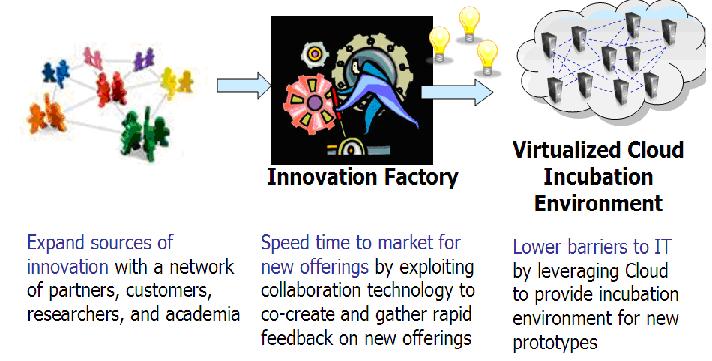
Benefits and the future
Business Benefits of Cloud Architectures
There are some clear business benefits to building applications using Cloud Architectures.
1. Almost zero upfront infrastructure investment:
2. just-in-time Infrastructure
3. More efficient resource utilization
4. Usage-based costing
5. Potential for shrinking the processing time
Conclusion:
In today’s global competitive market, companies must innovate and get the most from its resources to succeed. This requires enabling its employees, business partners, and users with the platforms and collaboration tools that promote innovation. Cloud computing infrastructures are next generation platforms that can provide tremendous value to companies of any size.
IBM is a leader in cloud computing and innovation technologies. IBM has been using these technologies internally to promote innovations through its own innovation portal, the Technology Adoption Program (TAP). Through the TAP program IBM employees have been able to quickly obtain computing resources. This has enable hundreds of innovation ideas to flourish within IBM.
REFERENCES:
- IEEE PAPERS
- DIGIT MAGAZINE
- WWW.ENCYCLOPEDIA.COM

